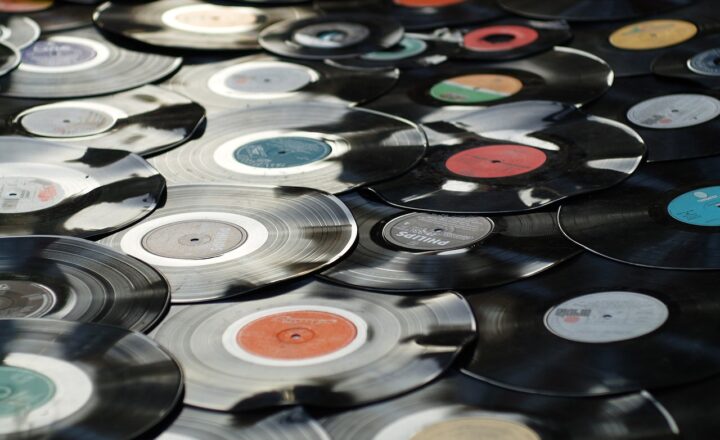The Science of Fear: Why Scary Movies Keep Us Coming Back for More
November 16, 2024

Fear is a primal emotion deeply embedded in the human psyche. It serves as a survival mechanism, triggering a fight-or-flight response. But why do people willingly seek out fear in the form of scary movies? This phenomenon is perplexing, yet fascinating, leading us to delve into the science of fear, the psychological effects of horror films, and the reasons why we keep coming back for more.
1. Understanding Fear: A Psychological Perspective
Fear is not just an emotion; it’s an intricate response involving the brain, hormones, and our evolutionary history. When we perceive a threat, the amygdala—an area of the brain linked to processing fear—activates. This activation sends signals to the body, prompting changes like increased heart rate, heightened awareness, and the release of adrenaline.
Unlike real threats, horror films let us experience fear in a safe environment. The enjoyment comes from the controllable nature of this fear, where we can watch scary scenes unfold from the comfort of our couch.
Studies suggest that horror films can evoke strong emotional responses, sometimes leading to euphoric feelings afterward. This paradox is what draws many to the genre.
2. The Adrenaline Rush: A Natural High
One reason scary movies are so appealing is the adrenaline rush they provide. As people scream, jump, or even laugh during chilling scenes, adrenaline floods the body. This rush can create a temporary state of euphoria and excitement, promoting a cycle of seeking out more fear-based experiences. The body responds to the perceived threat by increasing heart rate, blood pressure, and energy levels.
This physiological response to fear can be intoxicating. The aftermath—an exhilarating sense of having survived—reinforces our desire to watch more horror. In other words, it’s not just about fear; it’s about the enjoyable thrill that comes after facing it.
3. Facing Fears in a Controlled Environment
Horror films act as a safe platform for confronting our fears. Whether it be supernatural elements, realistic threats, or psychological terror, these films allow viewers to face their anxieties in a controlled setting. According to research in psychology, this exposure can desensitize us to fear, reducing anxiety in real-life situations.
When we engage with horror movies, we often gain a sense of control. We know the scares are fictional and that we can simply turn off the screen or change the channel if it gets too intense, allowing viewers to safely explore fear without real-world consequences.
Additionally, many audiences enjoy breaking social norms by engaging with content that is deemed scary or disturbing. This act of watching horror can be a form of rebellion against societal expectations, giving individuals a thrill that they might not experience in their everyday lives.
4. The Role of Sound and Cinematic Techniques
Cinematography plays a striking role in how fear is portrayed in films. Elements such as sound, lighting, and camera angles contribute significantly to the overall experience. Distorted sound effects, eerie background music, and sudden jumps in visuals enhance suspense and anticipation.
Directors and sound designers know how to craft tension: a lingering silence followed by a loud noise can trigger instinctual fear responses. Films like “The Shining” and “It Follows” use these techniques expertly to immerse viewers in a state of terror.
Moreover, the use of perspective in horror films is unique. Camera angles often mimic a voyeuristic perspective, putting the viewer in a position of vulnerability while increasing the sense of dread. This dynamic relationship between viewer and film heightens the emotional experience and can lead to psychological engagement long after the movie has ended.
5. The Community Aspect of Watching Horror Films
Fear can be more manageable when shared. Watching horror movies in a group fosters a sense of camaraderie among viewers, and reactions to scary moments are often amplified through laughter and gasps exchanged among friends.
Group viewings create an environment where the shared experience transforms fear into a communal activity. Talking about emotions generated by the film afterward can further intensify bonds among those watching and lead to shared experiences that enhance overall enjoyment.
Conversely, watching horror films alone can be an entirely different experience. This solitary setting often heightens fear, showing just how fear’s impact can differ based on context. Sharing that experience with others can help mitigate some of the stress and terror involved.
6. Cultural Context and Horror Trends
As society evolves, so do the themes present in horror films. Each decade reflects the cultural fears of the time, influencing what types of horror resonate with audiences. For example, the rise of technological fears led to an increase in films featuring artificial intelligence and cyber threats, like “The Matrix.” Social issues such as political unrest or bioethical dilemmas have also shaped cinema.
Filmmakers often mirror societal anxieties in their work, engaging audiences who resonate with those fears. The horror genre acts as a lens through which to view societal issues, often allowing for deeper reflection on the human experience. This cultural relativity keeps audiences hooked, wanting to see how their own fears manifest onscreen.
7. The Aftermath: Reflection and Resilience
The film’s climax often brings audiences to a cathartic resolution. Afterward, they’re left to reflect on the experience, with many expressing feelings of accomplishment. Having faced fear—even if it’s just fictional—can foster a sense of resilience. This resilience encourages audiences to engage with life outside the theater, bolstering coping mechanisms in real-world situations.
The psychological benefits of engaging with horror films meet a natural craving for excitement. Far from creating timid people, horror films foster bravery and encourage reflection about anxiety and fear as part of the human experience.
Conclusion
The attraction to horror films lies deeply rooted in the complexity of fear itself. We seek to navigate our anxieties from the safety of a couch, explore emotions driven by adrenaline, and reflect on societal issues mirrored by the genre. Scary movies uniquely blend entertainment with emotional engagement, providing viewers with a thrill that fosters community and resilience. With the power of cinematic techniques captivating our senses, it’s no wonder we keep returning to the terror of horror films, time and time again.
If you’re looking for your next horror fix or wondering why you keep going back for more, remember: it’s not just about the scares; it’s about understanding the intricate relationship we share with fear.








